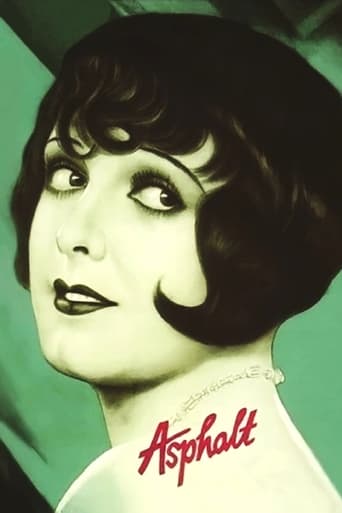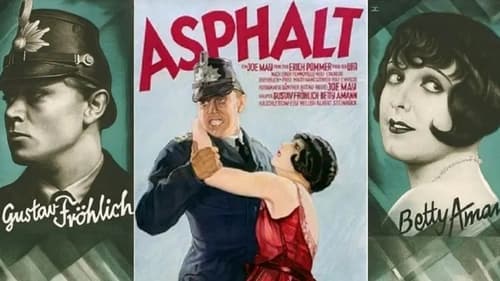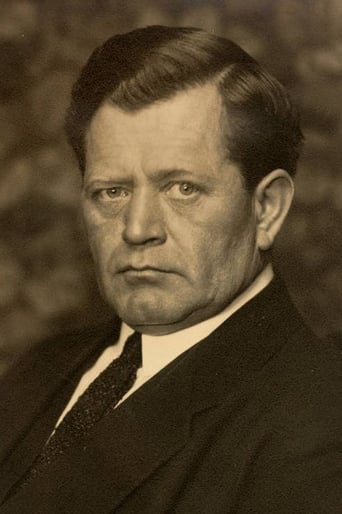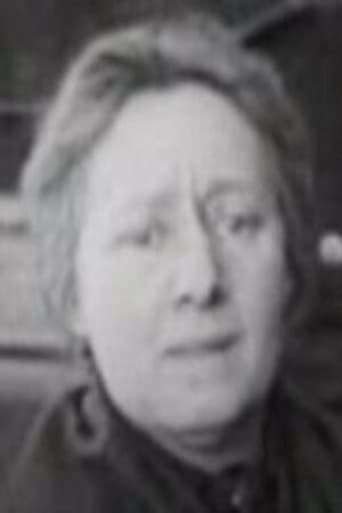Rijndri
Load of rubbish!!
Konterr
Brilliant and touching
Guillelmina
The film's masterful storytelling did its job. The message was clear. No need to overdo.
Cassandra
Story: It's very simple but honestly that is fine.
Aaron Igay
I've been watching the proto-noirs of this era and this is the first film which I would say fits smack dab in the subjective category of pure noir. A grimy city, stark photography, a femme fatale, an unapologetic somber ending, and even a wrongly-accused man. At the close of the silent era, this UFA production with all the big names in the German film industry made what Hollywood was doing look amateurish. I loved the scenes early on showing the traffic in Berlin, Opel 4/16s trying to compete with double-decker buses and our hapless hero the traffic cop stuck in the middle of the chaos. I could have done with a little more help from the inter-titles, many utterances went unwritten. But then again, words just get in the way anyway.
netwallah
Produced by Murnau, and brilliantly directed by May, this silent drama is a masterpiece of cinematography. From the opening montages, with workmen tamping down hot asphalt and the steamrollers behind them and the rain-wet streets shining in the street lights, to the traffic slanting across the street while the young policeman directs traffic, to the change in the lighting at his home after he feels he has fallen—he stands in shadow while down the hall in a halo of light his mother is busy in the kitchen, as if he were observing another world—to the expressionist shadows on the staircases toward the end—it's magnificently conceived and photographed. The lighting effects are astonishing. The story is not profound, involving an upright young traffic policeman falling under the spell of a diamond-thieving courtesan (Bette Amman), and when they are surprised in her bedroom by her regular lover, an older diplomat, who hurls the woman to the ground, the young man defends her, and himself, with the result that the man dies. He goes home and tells his parents he has killed a man, and the father, also a policeman, stands up, puts on his dress helmet, and they go downtown. But the woman intervenes, calmly incriminating herself to save the young man. She is taken away to prison, but the young man says he will wait for her, and she looks at him with eyes brimming with tears, and a smile. Amman has impossibly big dark eyes and a helmet of bobbed, curly hair. Her cloche hats give her head a sculptural look, and she also moves sometimes with astonishing sensual power, as when she throws herself on the young policeman, winding her arms around his neck, her toes clinging to his boot-tops, her huge luminous eyes inches from his. In the early part of the film she is hard and manipulative, but at the end she has been shaken by real feeling and humanized. Okay, it's an old story, riddled with cliché, but in this treatment it works, largely because the film is so beautifully shot.
MARIO GAUCI
I wasn't familiar with the work of director Joe May - apart from THE INVISIBLE MAN RETURNS (1940) and the Silent epic THE Indian TOMB (1921), a film I was disappointed by and which I always considered more of a Fritz Lang film anyway - although I had always been intrigued by this one and, now, thanks to Eureka and "Masters Of Cinema", I've managed to catch up with it.From watching ASPHALT - followed, in short order, by SPIONE (1928) and TARTUFFE (1925) - I've reacquainted myself with the peerless craftsmanship of German cinema during the 1920s; indeed, May's film is technically quite irreproachable - particularly his depiction of city-life by night, but also the opening montage (echoing contemporaneous Russian cinema) which forms part of the title sequence. Apart from this, the film's slight but compelling plot later became a staple of the noir genre where a naïve man is embroiled in the sordid life of a femme fatale with tragic consequences (the most obvious example, ironically enough, being perhaps Fritz Lang's superlative THE WOMAN IN THE WINDOW [1944]).In this regard, the film benefits greatly from the perfect casting of the two roles but especially the captivating Betty Amann, who effortlessly exudes sexuality throughout: distracting the elderly owner of the jewel shop with her considerable charms, while casually concealing one of the precious rocks in the tip of her umbrella; seducing the young, inexperienced traffic cop by excusing herself from his presence but, when he follows her into the bedroom, finds she has slipped under the sheets and is waiting for him; when he tries to leave, she literally leaps on him and, by wrapping herself around his waist, making it practically impossible for him not to give in to her. Also notable is a brief pickpocketing scene at the beginning featuring Hans Albers; the rather violent fight between the boy and the girl's elderly associate/lover, when the latter comes back to her apartment and catches them in flagrante, in which the furniture (conveniently held by visible wires) gets literally thrown around the room; the concluding act, then, marked by a number of twists (which lead to a sort of happy ending more akin to Bresson's spiritually-infused PICKPOCKET [1959] than the hard-boiled noirs it inspired), is enormously satisfying.
goblinhairedguy
Joe May's "Asphalt" is not as well remembered as the other masterpieces of German silent expressionist cinema, possibly due to the lack of immortals in the cast and its decidedly commercial scenario. But it certainly deserves a mention alongside the great works of Lang, Pabst, Murnau, et al. The cop-seduced-by-the-sexy-crook plot is the prototype for many a great (and not-so-great) film noir to come, and the seduction scene certainly packs a punch. Like most films of the time, it eventually descends into melodrama, but Gunther Rittau's remarkably mobile and probing camera is so skillful in revealing the characters' thoughts and lending pathos to their plight that he and the director transcend the clichés in the manner of Stahl and Ophuls, with some Langian irony peeking through at times. The opening profile of the city is a justly famed visual tour-de-force, but the stark, expressionist compositions that highlight the climax are just as striking and iconic. May never made the big time in Hollywood, but spun a few good programmers for the B picture mill.








